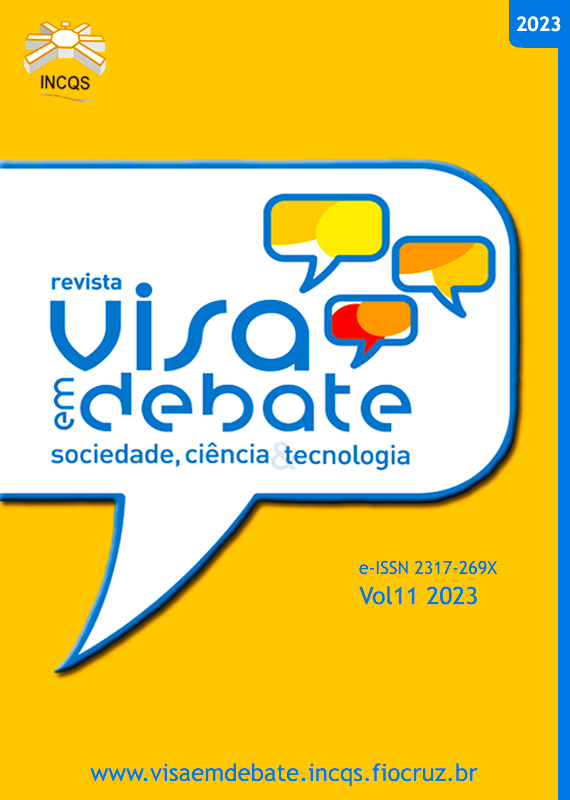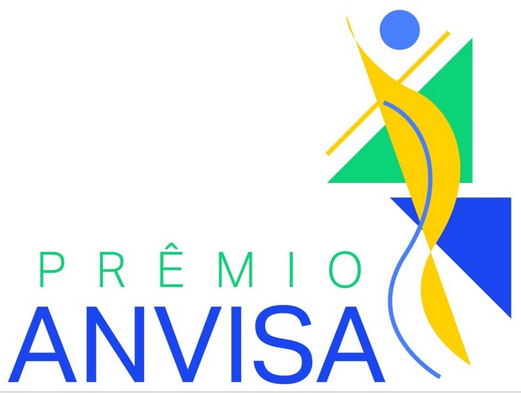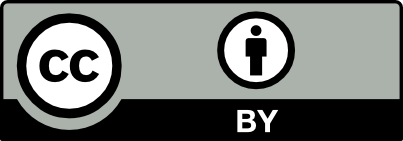Monitoring of residual sulfur dioxide content in canned mushroom sold in the State of São Paulo from 2016 to 2022
Vigil Sanit Debate, Rio de Janeiro, 2023, v.11: e02102 | Published on: 18/07/2023
DOI:
https://doi.org/10.22239/2317-269x.02102Keywords:
Sulfite, Sulfur Dioxide, Monier-Williams Method, Canned Mushrooms, ChampignonAbstract
Introduction: Sulfiting agents have many technological functions: they act as preservatives, antioxidants, flour treatment agents, whiteners and control enzymatic and non-enzymatic browning. In mushrooms, sulfite acts by inhibiting the enzymatic action of polyphenoloxidase, delaying oxidative browning. The presence of sulfites in foods has been linked to adverse reactions in sensitive people. The established value for acceptable daily intake (ADI) is 0 – 0.7 mg/kg body weight, expressed as sulfur dioxide (SO2). RDC No. 8, of March 6, 2013, of the National Health Surveillance Agency of the Ministry of Health established a maximum limit of 0.005 g/100 g (50 mg/kg) for canned mushrooms as residual SO2 in the antioxidant function. Objective: To determine the residual SO2 content in canned mushrooms and evaluate the additive declaration on the label. Method: From 2016 to 2022, 57 samples from 28 different brands of canned mushrooms were shared by the Health Surveillance Offices. The determination of total SO2 followed the optimized Monier-Williams distillation method. Results: Of the samples evaluated, 33 (58%) presented unsatisfactory SO2 content, above the maximum limit established in the specific technical regulation. High levels were found, reaching 2,591 mg/kg (0.2591 g/100 g). Six unsatisfactory brands in terms of SO2 contents were also in disagreement because they did not declare the addition of the additive in the list of ingredients on the label, which could represent a serious risk for individuals sensitive to sulfites. Conclusions: The high percentage of samples in disagreement with the maximum limit of the additive established in the legislation and the non-declaration in the list of ingredients on the label, indicate the need for a greater control of the producers and distributors in the use of sulfite salts and for a continuity of monitoring of SO2 content in canned mushrooms.
Downloads
References
Associação Nacional dos Produtores de Cogumelos - ANPC. São José dos Pinhais, PR; 2013[acesso 21 fev 2022]. Disponível em: https://www.anpccogumelos.org/cogumelos
Chang S-T, Miles, PG. Mushrooms: cultivation, nutritional value, medicinal effect and environmental impact. 2nd ed. Boca Raton: CRC Press; 2004. Chap 1, What are mushrooms?; p. 2.
Agência Nacional de Vigilância Sanitária – Anvisa. Resolução RDC nº 272, de 22 de setembro de 2005. Dispõe sobre o regulamento técnico para produtos de vegetais, produtos de frutas e cogumelos comestíveis. Diário Oficial União. 23 set 2005.
Hawksworth DL. The magnitude of fungal diversity: the 1.5 million species estimate revisited. Mycol Res. 2001;105(12):1422-1432. doi:10.1017/S0953756201004725
Wasser SP. Medicinal mushrooms as a source of antitumor and immunomodulating polysaccharides. Appl Microbiol Biotechnol. 2002;60:258-274. doi:10.1007/s00253-002-1076-7
Furlani RPZ, Godoy HT. Valor nutricional de cogumelos comestíveis: uma revisão. Rev Inst Adolfo Lutz. 2005;64(2):149-154.
Furlani RPZ, Godoy HT. Valor nutricional de cogumelos comestíveis. Ciênc Tec Aliment. 2007;27(1):154-157. doi:10.1590/S0101-20612007000100027
Czapski J, Szudyga K. Frozen mushrooms quality as affected by strain, flush, treatment before freezing, and time of storage. J Food Sci. 2000;65(4):722-725. doi.org:10.1111/j.1365-2621.2000.tb16079.x
Singh P, Langowski H-C, Wani AA, Saengerlaub S. Recent advances in extending the shelf life of fresh Agaricus mushrooms: a review. J Sci Food Agric. 2010;90:1393-1402. doi:10.1002/jsfa.3971
Lin X, Sun D-W. Research advances in browning of button mushroom (agaricus bisporus): Affecting factors and controlling methods. Trends Food Sci Technol. 2019;90:63-75. doi.org/10.1016//j.tifs.2019.05.007
Mau J-L, Miklus MB, Beelman RB. The shelf life of agaricus mushrooms. In: Charalambous G, editor. Shelf life studies of foods and beverages: chemical, biological, physical and nutritional aspects. Amsterdam: Elsevier Science Publishers; 1993. p.255-288.
Whitaker JR, Lee, CY. Recent advances in chemistry of enzymatic browning. An Overview. Enzymatic browning and its prevention. ACS Symposium Series 600; American Chemical Society: Washington, DC, 1995. Chapter 1. p.2-7. doi:10.1021/bk-1995-0600.ch001
McEvily AJ, Iyengar R, Otwell WS. Inhibition of enzymatic browning in foods and beverages. Crit Rev Food Sci Nutr. 1992;32(3):253-273. doi:10.1080/10408399209527599
Lambrecht HS. Sulfite substitutes for the prevention of enzymatic browning in foods. Enzymatic browning and its prevention. ACS Symposium Series 600; American Chemical Society: Washington, DC, 1995. Chapter 24. p.313-323. doi:10.1021/bk-1995-0600.ch024
Walker R. Sulphiting agents in foods: some risk/benefit considerations. Food Add Contam. 1985; 2(1):5-24. doi:10.1080/02652038509373522
Taylor SL, Higley N A, Bush R K. Sulfites in foods: uses, analytical methods, residues, fate, exposure assessment, metabolism, toxicity, and hypersensitivity. Adv Food Res, 1986; 30:1-76. doi:10.1016/s0065-2628(08)60347-x
Takahashi AA, Martins MS, Della Torre JCM, Oliveira CC, Granato D. Influence of distillation time and sample mass on sulfur dioxide analysis in passion fruit juice through Monier-Williams method. Food Sci Technol, 2015;35(3):434-437. doi:10.1590/1678-457X.6684
World Health Organization - WHO. Safety evaluation of certain food additives. Prepared by the sixty-ninth meeting of the Joint FAO/WHO Expert Committee on Food Additives (JEFCA). WHO Food Additives Series:60. Geneva; 2009.
Agência Nacional de Vigilância Sanitária – Anvisa. Resolução RDC nº 8, de 8 de março de 2013. Dispõe sobre a aprovação de uso de aditivos alimentares para produtos de frutas e de vegetais e geleia de mocotó. Diário Oficial União. 8 mar 2013.
Codex Alimentarius Commission. Codex General Standard for Food Additives (GSFA) - Codex Stan 192-1995; 2019.
European Commission. European Parliament and Council Directive No 95/2/EC of 20 February 1995 on additives other than colours and sweeteners for use in foodstuffs. Brussels, Belgium, European Commission; 1995.
Wedzicha BL. Chemistry of sulphiting agents in food. Food Addit Contam. 1992;9(5):449-459. doi:10.1080/02652039209374097
Food and Drug Administration – FDA. Code of Federal Regulation. Title 21. Sec.182.3862 (21CFR182.3862). [acesso 31 mar 2022]. Disponível em: https://www.accessdata.fda.gov/scripts/cdrh/cfdocs/cfcfr/cfrsearch.cfm?fr=182.3862
Food and Drug Administration – FDA. Food allergies. Color and food additives. [acesso 22 fev 2022]. Disponível em: https://www.fda.gov/food/food-labeling-nutrition/food-allergies
Fazio T, Warner CR. A review of sulphites in foods: analytical methodology and reported findings. Food Addit Contam. 1990;7(4):433-454. doi:10.1080/02652039009373907
World Health Organization - WHO. Toxicological evaluation of certain food additives with a review of general principles and of specifications. Seventeenth report of the Joint FAO/WHO Expert Committee on Food Additives (JEFCA). WHO Technical Report Series, Nº539. Geneva; 1974.
World Health Organization - WHO. Evaluation of certain food additives. Fifty-first report of the Joint FAO/WHO Expert Committee on Food Additives (JEFCA). WHO Technical Report Series, Nº 891. Geneva; 2000.
Official methods of analysis of AOAC International - AOAC. International AOAC Official Method 990.28. Sulfites in Foods. Optimized Monier-Williams. 2017; Chapter 47. Section 47.3.43.
Nagato LAF, Takemoto E, Della Torre JCM, Lichtig J. Verificação do método Monier-Williams otimizado na determinação de dióxido de enxofre em sucos de frutas, água de coco e cogumelos em conserva. Rev Inst Adolfo Lutz, 2013;72(1):28-40. doi:10.18241/0073-98552013721539
Agência Nacional de Vigilância Sanitária – Anvisa. Resolução RDC nº 259, de 20 de setembro de 2002. Aprova o Regulamento Técnico sobre Rotulagem de Alimentos Embalados. Diário Oficial União. 23 set 2002.
Bragagnolo N, Silva C A, Taniwaki MH. Avaliação dos teores de dióxido de enxofre e da qualidade microbiológica de cogumelos em conserva. Rev Inst Adolfo Lutz. 2001; 60(2):103-107. doi.org:10.53393/rial.2001.v60.35537
Martins MS, Della Torre JCM, Chasin LB, Silva SRF, Rodrigues RSM. Avaliação dos teores de dióxido de enxofre em cogumelos em conserva, sucos de fruta e camarões comercializados no Estado de São Paulo. In: XIX Encontro Nacional e V Congresso Latino Americano de Analistas de Alimentos; 2015; Natal, RN.
Martins, MS, Della Torre, JCM, Barbosa, J. Monitoramento dos teores de dióxido de enxofre em cogumelos em conserva [e-book]. Resumos expandidos do Webinário Internacional de Ciência e Tecnologia em Alimentos. Santa Maria: Universidade Federal de Santa Maria; 2021 [citado em 29 Março 2022]. Disponível em: https://repositorio.ufsm.br/bitstream/handle/1/23516/E-book_Resumos_Expandidos_WICTA_2021.pdf?sequence=1&isAllowed=y
Downloads
Published
Issue
Section
License
Copyright (c) 2023 Maristela Satou Martins, Jussara Carvalho de Moura Della Torre, Jamila Barbosa (Autor)

This work is licensed under a Creative Commons Attribution 4.0 International License.
COPYRIGHT ALLOWANCE The author (s) hereinafter designated as the ASSIGNOR hereby assign and transfer, free of charge, the ownership of the copyrights related to this ARTICLE to the Vigilância Sanitária em Debate: Sociedade, Ciência & Tecnologia (Health Surveillance under Debate: Society, Science & Technology) – Visa em Debate, represented by FUNDAÇÃO OSWALDO CRUZ, established at Av. Brasil, nº 4365, Manguinhos, Rio de Janeiro, RJ, Brazil, CEP 21045-900, under the conditions set out below: (a) The terms and conditions set forth in this Agreement shall apply to the following: 1. The ASSIGNOR declares that they s(he) is (are) the author (s) and owner (s) of the copyrighted property of the ARTICLE submitted. 2. The ASSIGNOR declares that the ARTICLE does not infringe the copyrights and / or other property rights of third parties, that the disclosure of images (if any) has been authorized and that they s(he) assume(s) full moral and / or property liability for its content, before third parties. 3. THE ASSIGNOR assigns and transfers all copyrights relating to the ARTICLE to the ASSIGNEE, especially the rights of editing, publication, translation into another language and reproduction by any process or technique. The ASSIGNEE becomes the exclusive owner of the rights related to the ARTICLE, and any reproduction, totally or partially, is prohibited in any other means of publicity, printed or electronic, without prior written authorization from the ASSIGNEE. 4. The assignment is free and, therefore, there will be no remuneration for the use of the ARTICLE by the ASSIGNEE.







